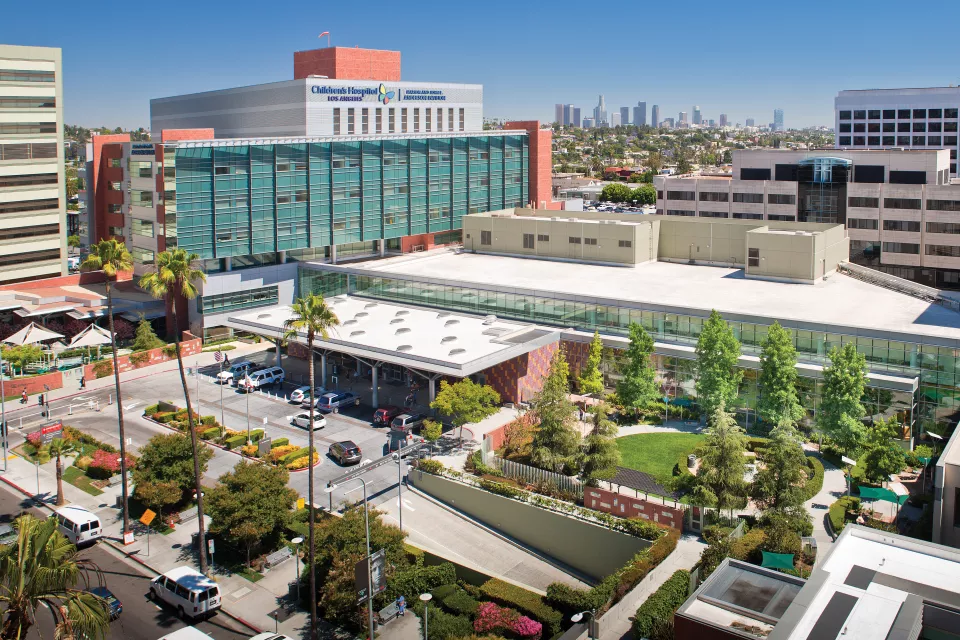Bone Marrow Transplant Program
The Bone Marrow Transplant (or Hematopoietic Stem Cell Transplantation) Program is one of the largest, most highly regarded pediatric programs in the world. Established in 1983, the Program has performed transplants for more than 800 children over the past two decades and currently performs 45 to 55 transplants per year for infants and children with cancer and leukemia, bone marrow failure and genetic diseases including sickle cell disease, severe immune deficiencies and some metabolic/storage diseases. The program is accredited by the Foundation for the Accreditation of Cellular Therapy (FACT) and performs autologous and allogeneic transplants from sibling and family donors and from unrelated adult and cord blood donors, as is best on a case-by-case basis.
- The first bone marrow transplant at our hospital was performed on Dec. 12, 1983.
- The hospital has now performed more than 1,000 bone marrow transplant procedures.
- The Pediatric Bone Marrow Transplant Program performs nearly 50-percent of all pediatric bone marrow transplants in Los Angeles County.
Heart Transplant Center
The Heart Transplant Center is a world pioneer and international referral center in pediatric heart transplants. The Heart Institute at Children's Hospital Los Angeles is a pioneer in pediatric heart transplants for children with end-stage cardiac or pulmonary disease. The center is part of the Division of Cardiothoracic Surgery and is one of the country's largest pediatric transplant programs and the only program of its kind in California. Patient care includes complete pre-transplant evaluations and post-transplant management by a comprehensive, coordinated transplant team.
- Sixty heart transplants have been performed here.
- The first heart transplant at our hospital was performed on March 4, 1993.
Liver & Intestinal Transplant Program
The Liver & Intestinal Transplant Program is the largest of its kind at any freestanding pediatric facility in the country. Our acclaimed surgeons perform more living donor transplants annually than any other center in California. Since our founding in 1997, the survival rate for transplant recipients is a remarkable 96%. As a result, patients come here from across the nation for care. Liver transplants performed include live donor transplants, in which a healthy person donates a segment of his or her liver, and split liver transplants, which involve use of a cadaver organ
- One hundred, twenty-six liver transplants have been performed here, including 59 living donor transplants and three "bloodless" liver transplants.
- The first liver transplant at Children's Hospital Los Angeles was performed on May 13, 1998.
- The first living donor liver transplant at our hospital was performed on Sept. 30, 1998.
- The first “bloodless” liver transplant at our hospital was performed on Feb. 7, 2001.
Liver transplants performed include:
- live donor transplants, in which a healthy person donates a segment of his or her liver
- split liver transplants, which involve use of a cadaver organ
At The Saban Research Institute, our investigators are working to unlock the secrets of acute liver failure—the reason many liver transplants are performed.
The hospital's Division of Gasteroenterology and Nutrition, in concert with the Department of Surgery, performs small bowel transplants.
- Eight small bowel transplants have been performed here.
- The first isolated small bowel transplant at our hospital was performed on July 11, 2004.
Kidney Transplant Program
The Division of Nephrology , in conjunction with the Department of Surgery and the Divisions of Urology and Pediatric Surgery, provides interventions for children who require kidney transplants. Sources of transplants are either living related donor (usually a parent) or a cadaveric donor. The program is extremely successful with both patient and graft survival statistics that rival the best programs in the United States.
- Eight-hundred, eighty-three kidney transplants have been performed here.
- The first kidney transplant at our hospital was performed on December 14, 1967.
Our Hospital's History of Transplantation
- Bone Marrow Transplant
The first bone marrow transplant was performed at our hospital on Dec. 12, 1983; 1,113 bone marrow transplants (691 allogeneic; 408 autologous; 1 [identical twin to identical twin]) have been performed here since that time – and our Pediatric Bone Marrow Transplant Program is now responsible for almost 50 percent of the pediatric bone marrow transplants in Los Angeles County. - Heart Transplant
The first heart transplant was performed at our hospital on March 4, 1993; 67 heart transplants have been performed here since that time. - Lung Transplant
The first lung transplant was performed at our hospital on March 13, 1993; 43 cadaveric lung transplants have been performed here since that time. - Living Donor Lobar Lung Transplant
The first living donor lobar lung transplant was performed at our hospital on May 13, 1993; 55 living donor lobar lung transplants have been performed here since that time. - Liver Transplant
The first liver transplant was performed at our hospital on May 13, 1998; 152 liver transplants have been performed here since that time. - Living Donor Liver Transplant
The first living donor liver transplant was performed at our hospital on Sept. 30, 1998; 72 living donor liver transplants have been performed here since that time. - Bloodless Liver Transplant
The first “bloodless” liver transplant was performed at our hospital on Feb. 7, 2001; three bloodless liver transplants have been performed here. - Kidney Transplant
The first kidney transplant performed by the our hospital team was Dec. 14, 1967; 900 kidney transplants have been performed here since that time. - Combined Kidney/Liver Transplant
The first combined kidney/liver transplant was performed at our hospital on Oct. 23, 2008. - Small Bowel Transplant
The first small bowel transplant was performed at our hospital on July 11, 2004; nine total transplants, including five isolated small bowel transplants, three liver/small bowel transplants, and one multivisceral (small bowel, liver, stomach, pancreas, spleen and duodenum) have been done.
